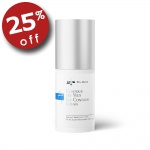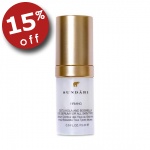B
bactericide
An
antibacterial
agent.
bacteriostatic
See antibacterial.
baking soda
Also known as sodium
bicarbonate, baking soda relieves burns, itching, urticarial lesions and insect bites.
It’s often used in bath powders to help cleanse oily skin, and is a common component
of many homemade cosmetics and food preparations. It’s an excellent tooth
powder on its own, and when combined with aloe vera gel,
it’s the best toothpaste you can use.
balneotherapy
balneotherapy
The scientific medical study of bathing and its effects on the
human body.
balsams
These healing or soothing agents contain relatively large
amounts of cinnamic or benzoic acid. While benzoic acid is toxic in its synthetic versions
and in tinctures like sodium benzoate, benzoin gum and other balsams that contain benzoates aren’t toxic—in
fact, they’re helpful. Typical balsams are balsam of Peru, balsam
tolu, storax
and benzoin.
barrier creams
These are applied to the skin to provide a protective coating
against chemical irritants.
basal layer
basal layer
The layer of skin at the base of the epidermis
(closest to the dermis).
dermis).bayberry wax
See waxes.
waxes.bee pollen
This natural substance is high in pantothenic
acid, and European research suggests it may be helpful in com
bating the effects of radiation exposure. However,
it’s not particularly valuable as a topical.
beeswax
This natural substance is obtained from the
honeycomb of the honeybee, Apis mell Wera, as well as other Apis species. Both
yellow beeswax and white beeswax are used as thickeners, emulsifiers or stiffening
agents in ointments, cold creams, emollient creams, lotions, lipsticks, hair
dressings, suppositories and other cosmetics. Vegans will want to avoid products
with beeswax. Also see waxes.
waxes.beet powder
This natural, nontoxic color is made from
powdered beet root and is sometimes used in cosmetics.
behenic acid
This crystalline mixture offattv acids from
seeds (such as peanuts) is used as an opacifier in cosmetics.
bentonite
This soft, moisture-absorbing, clay mineral,
often of volcanic origin, contains montmorillonite as its essential mineral. Used
as a suspending agent, emulsWer, thickener, binder and absorbent, and in mask prod
ucts, it may be drying to the skin. It’s called bentonite
because it originally came from Benton, Montana. Also
see clay and kaolin.
benzaldehyde
This synthetic chemical is used as an artificial almond oil, and also
as a preservative and solvent. It’s irritat
ing to the eyes,
skin and mucous membranes.
benzalkoniurn chloride
This quaternary (cation ic) compound has been shown to be highly
toxic and shouldn’t be inhaled. It’s also a primary skin irritant and is a
common source of eye irritations.
Benzalkonium chloride is used in hair conditioners and
conditioning shampoos (the cationic types), cream rinses and deodorants, in concentrations
of 0.1% to 0.5%; it's also used as an antiseptic and a germicide. It’s inactive when
used with anionics, soaps, proteins, plastics, rubber, citrates. metals and nitrates. Some
trade names of this preservatixe are Zephirol, Roccal, Dodigen 226 and Barquat MB-SO.
benzene
This petrochemical, which is used as a solvent and
manufacturing agent in cosmetics, can cause depression, convulsions, coma and death;
prolonged exposure is suspected of causing leukemia. Beuzene vapors can be absorbed
through the skin and cause irritation. Benzene should be avoided.
benzethoniuni chloride
This common ingredient in many feminine hygiene products can sensitize
and irritate the skin, possibly leading to allergic dermatitis. It’s also used as a
preservative.
benzoin, benzoin gum
A balsamic resin found in various species of an Asian tree called the storax
(or styrax), benzoin gum is formed when the bark is incised; the exuded resin,
which hardens on exposure to air and sunlight, is then collected. Benzoin, especially Siam
beuzoin, has antioxidative properties and the natural extract is used in some
cosmetics, though more often a synthetic version, such as sodium benzoate, is used.
benzyl alcohol
This natural, aromatic alcohol
is found in many herbs, including balsam Peru, canaga oil,
cassie absolute, castoreum, cherry laurel leaves, jasmine and storax. It’s used in
injectable drugs, ophthalmic products and oral liquids, as a solvent in cosmetics and
perfumes, and as a preservative in hair dyes.
In oral products, benzvl alcohol is used at concentrations between 0.5%
and
200, and
in cosmetics at 1% to 3%. It has a high percutaneous toxicity and it can cause allergic
reactions. It’s also known as benzenemethanol, phenylcarbinol
and phenvlmethanol.
benzyl carbinol
This preservative is a natural alcohol found in essential
oils
such as rose, hyacinth and aleppo
pine. It’s toxic internally at 1.79 gIg and on the skin at 5—10 ml/kg; it
irritates human eyes at concentrations of 0.75%. It’s also known as phenethyl
alcohol.
beta carotene
See carotenoids.
beta me
An alkaloid present in beets.
BHA and BHT
BHA (butylated hydroxyanisole) and BUT (butylated hydroxytoluene) are
synthetic antioxidants approved for use in food and cosmetics. Also see
antioxidants.
biochemistry
The study of the chemical compounds and processes that occur in living plants and
animals.
biodegradable
This term refers to substances that can be broken down by natural
processes into chemical components that can reenter the natural world without changing it.
Many "biodegradable" household cleaners, cosmetics and other products are far
less biodegradable than their labeling would lead you to believe, thanks to various preservatives and other chemicals used in them. Read the label to be sure the
product is natural.
biotin
One of the B vitamins that helps dermatitis and hair loss. Also see vitamin
B complex.
vitamin
B complex.bisulfites and sulfites
These inorganic acids are toxic, causing headaches, nausea or diarrhea at doses lower than 50 mg/kg of
body weight. Lab animals fed 0.5Oo~2Oo bisulfite in food showed injuries to the nervous
system within a year; those fed 0.25% bad diarrhea but no other toxic effects. Although
neither human nor animal tests show these preservatives to be safe, they’re used at
concentrations of 0.200 in cosmetics and at P0—2% as preservatives and
clisinfectants in foods (especially wines).
The sulfites are supplied as white powders and the bisulfites as clear
to semi-clear solutions (which aren’t stable). Some of the sulfites are also soluble
in water.
bitter
Bitterness in an herb promotes the production of saliva and gastric
juices, thereby increasing appetite and digestion.
blackhead
This skin blemish results from an oily secretion of sebum and dead cells that
clogs the hair follicle; the
plug darkens when it comes into contact with the air. Blackheads differ from
This skin blemish results from an oily secretion of sebum and dead cells that
clogs the hair follicle; the
plug darkens when it comes into contact with the air. Blackheads differ from
This skin blemish results from an oily secretion of sebum and dead cells that
clogs the hair follicle; the
plug darkens when it comes into contact with the air. Blackheads differ from white
heads in that the follicle remains open to the air; whiteheads are
covered with a layer of skin and are thus more likely to become infected. Deep cleansing
of the skin can help prevent blackheads. Also see acne.
blue light
A therapeutic lamp used to soothe the nerves and also to heal and
disinfect skin tissue.
bond
A bond is a molecular linkage between two different atoms or radicals
of a chemical compound, usually altered by the transfer of one or more electrons from one
atom to another. In chemical formulas, a bond is represented by a dot or line between
atoms.
borates
This generic term refers to salts related
to boric oxide or orthoboric acid. See borax and boric
acid for examples.
borax
This naturally occurring mineral (also known as pyroborate, diborate or
sodium borate) is used to manufacture glass, ceramic glazes, enamels, water-softening
agents, flame-proofing materials, preservatives and fluxes. It may be harmful if breathed
into the lungs during manufacturing or processing.
In cosmetics, borax is used as an emulsifyer. When
combined with beeswax in a cream, it usually makes up about
6% of the weight of the wax. As the concentration of borax increases, the cream stiffens.
boric acid
Boric acid, also known as acidum boricum or orthoboric acid, is used
widely as an eyewash. An odorless, white, crystalline powder, it can be used around
windows and doors as a bug
repellent. It shouldn’t be used in baby cosmetics or baby powder, since it’s
toxic at doses of 1—3 g for babies, 5 g for children and 15—20 g for adults.
boron
This mineral makes
HI) 0.00100 of the earth’s crust and is found at concentrations
of a few parts per million in sea water. In small amounts, it’s vital to all forms of
plant life, but in large amounts, it’s toxic. There are many organic
compounds of boron, including boric acid.
botanical
Any substance obtained from plants which has medicinial or similar
uses.
bran
See wheat bran.
brewer’s yeast
High in protein and all the B vitamins, this powder is sometimes added
to cosmetics for its nutritional value. Also see vitamin B complex.
bromelain
This enzyme, extracted from pineapple juice, hydrolyzes proteins.
It’s used in cosmetics as a textur
izer and keratolytic.
bromochiorophene
This phenolic compound is acutely toxic when taken orally.
bronopol
This toxic alcohol is used in fabric softeners and detergents,
in pharmaceutical products, and in face creams, shampoos, hair dressings, mascaras and
bath oils at concentrations of 0.01% to 0.1%. Supplied as a ~vhite crystalline powder, it
causes skin irritation at concentrations of 0.25%.
butyl acetate
This toxic solvent is used in nail polishes and in many other products.
butylene glycol
This thick liquid, used in hair rinses and conditioners, causes many
allergic reactions and is harmful to the environment.
butyl stearate
This synthetic chemical is found in face creams and other facial care products. It’s a possible allergen and
has caused acne cosmetica (acne caused by cosmetics).
butyrolactone
This very toxic, synthetic chemical is used as a solvent for resins in
cosmetics, especially nail polish removers.




 Today's random forum topics
Today's random forum topics
 What our customers are saying
What our customers are saying